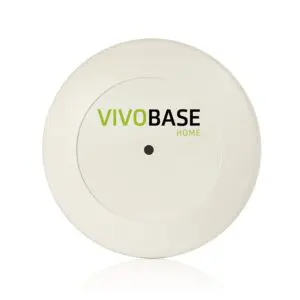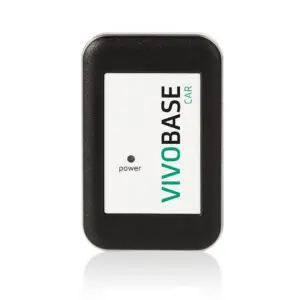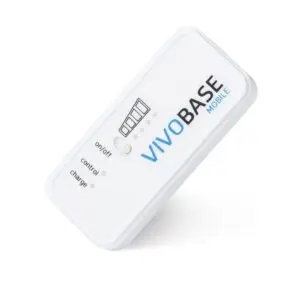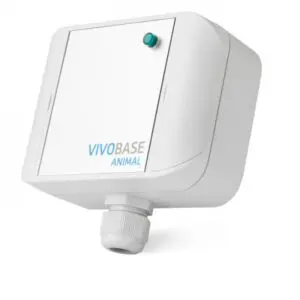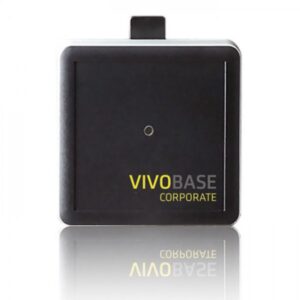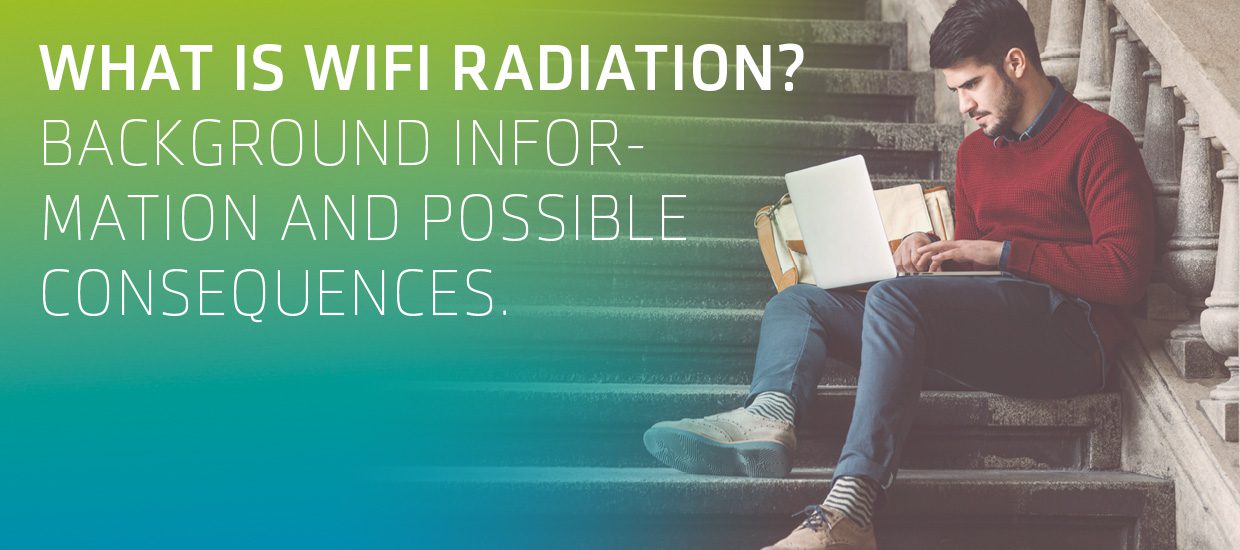
WHAT EXACTLY IS WiFi?
WLAN is the abbreviation for "Wireless Local Area Network" and is used to set up local computer networks. In contrast to wired "LANs", laptops, mobile phones and tablets are wirelessly connected to each other via radio. WiFi is often used as a synonymous term. Access to WiFi is now a matter of course in hotels, bars, restaurants, libraries and other public facilities. The use of WLAN in private households has also become indispensable. Users benefit from a wireless Internet connection that offers greater bandwidth at a lower cost, independent of the cellular network.
WHAT FREQUENCIES DOES WLAN WORK WITH AND WHAT RADIATION EXISTS?
To date, two license-free frequency blocks from the "Industrial, Scientific and Medical Band" (ISM) have been approved for WLAN (2.4 GHz and 5 GHz). These are frequency ranges that can be used in industry, science, medicine and domestic areas.
The WLAN works with pulsed high-frequency signals. This means that a signal does not exist continuously, but is switched on and off in a certain rhythm. Colloquially, this is also referred to as WLAN radiation. Normally, small data packets are sent at intervals to all stations in the reception area via a wireless access point (WAP), usually via a router in the private sector. The following content was taken from the information sheet on voice and data transmission by radio: Bluetooth and WLAN from the Federal Office for Radiation Protection (www.bfs.de):
“Like Bluetooth, WLAN uses the 2.4 GHz ISM band. In addition, the frequency ranges 5.150 to 5.350 and 5.470 to 5.725 GHz are approved. The max. permitted radiation power depends on the frequency range:
- 100 mW in the 2.4 GHz ISM band,
- 200 mW from 5.15 to 5.35 GHz (use is only permitted inside closed rooms, e.g. buildings, aircraft),
- 1000 mW from 5.470 to 5.725 GHz . Frequencies above 5.25 GHz may only be used with automatic power control, otherwise maximum values that are 50% lower apply.
The maximum radiation power is related to an imaginary standard antenna that radiates in all directions. Directionally radiating antennas may be used if the permitted radiated powers are observed."
The range of the WLAN devices is between 25 m (indoors) and up to 150 m (outdoors). If special directional antennas are used, the range can be extended to several kilometers. In some cases, entire cities are already being connected to one another via WLAN.
WHAT MEASURES ARE POLITICS AND GOVERNMENT INSTITUTIONS TAKE TO PROTECT US?
In order to protect the public from health hazards from electric and magnetic fields from low-frequency and direct current systems, limit values are specified in the 26th ordinance for the implementation of the Federal Immission Control Act (26th BImSchV).
The so-called SAR value (specific absorption rate) is used as the basis for defining limit values in this area. It is a measure of the absorption of electromagnetic fields in a body or material. The absorption of electromagnetic energy always leads to heating of a body. The limit values for mobile phones, WLAN and Co. are therefore only based on the thermal effect of electromagnetic radiation. Other influences of the radiation, such as possible damage to the genetic material of the cell or similar, are not taken into account.
The maximum values recommended to protect health are
- 0.08 watts per kilogram (W/kg) averaged over the whole body and
- 2 W/kg averaged locally over parts of the body, for example in the head.
According to the information in the information sheet on voice and data transmission via radio: Bluetooth and WLAN from the Federal Office for Radiation Protection, the SAR values of the WLAN devices remain below the specified limit values when used remotely. Only "in unfavorable situations (e.g. laptop on the lap and transmitter directly above the thigh) values in the range of the recommended maximum value can occur."
WHAT PRECAUTIONS SHOULD BE TAKEN?
The recommendation of the Federal Office for Radiation Protection is to maintain the minimum distances to the WLAN devices specified by the manufacturer. Furthermore, it is advised to minimize personal exposure to radiation as much as possible "in order to keep possible but previously unrecognized health risks low." Specifically, in the case of WLAN, it is recommended to use cable connections as far as possible and to avoid wireless networks. It is also recommended not to install the WLAN access points in the immediate vicinity of people (e.g. at work) and to set the range limit.
WLAN is part of our mobile and networked world and many do not want to do without comfort. Of course, everyone in their own household can decide for themselves whether and when they want to use WiFi. However, what you cannot influence is the use of WLAN devices in the neighboring apartments and in the immediate vicinity, which also radiate into the neighboring apartments due to the large range of the WLAN devices. Not to mention the influences outside your own four walls, such as in restaurants, on public transport and other public facilities. How great the influence of WLAN devices is becomes immediately clear when you look at the usually very long list of available WLAN networks when you switch on the network search on your cell phone or PC.
You can find further background information and news on our website as well as on Facebook and Twitter.
Product overview
-
At home
VIVOBASE Home
$479.00Add to cartProtection against elektrosmog and smartphone radiation at home
- Application in houses and apartments
- Approx 30 m Effective radius, through walls and ceilings
- Available as a plug for the socket
- Dimension approx. an average of 110 mm, Weight 75 g
-
In cars
VIVOBASE Car
$349.00Add to cartProtection against electrosmog and smartphone radiation in cars
- Application within a car and e-car, within bus, lorry and camper and on a boat
- Approx 4 m effective radius
- With USB-USB or USB to cigarette lighter interface
- Dimension aprox. 85x55x15 mm, Weight 15 oz
-
Mobile
VIVOBASE Mobile
$279.00Select optionsProtection against elektrosmog and smartphone radiation away from home
- Application on the body and in the office
- Approx 1,5 m effective radius
- Lithium-ion battery
- Available in different colors
- Dimension approx. 71 x 18 x 7 mm
- Weight 5 oz
-
For animals
VIVOBASE Animal
$750.00Add to cartProtection against electrosmog for your animals
- Application in horse stables and livestocks, in riding centres and riding halls, in animal parks and zoos
- Approx. 40 m effective radius, through walls and ceilings
- Splash-proof wall-mounted device
- Dimension approx. 120×89 mm, Weight 300 g
-
For companies
VIVOBASE Corporate
Select optionsProtection against elektrosmog and smartphone radiation for companies, hotels and public institutions
- Individual and personalized concept from installation to certification
- Available as surface mounting, switch cabinet installation or as a plug

